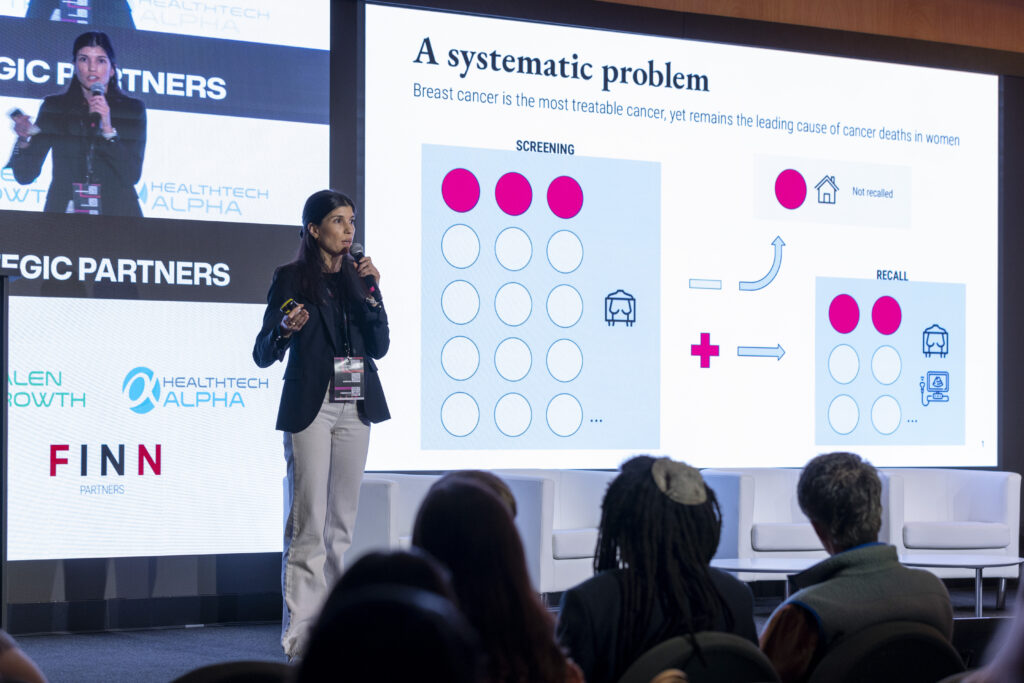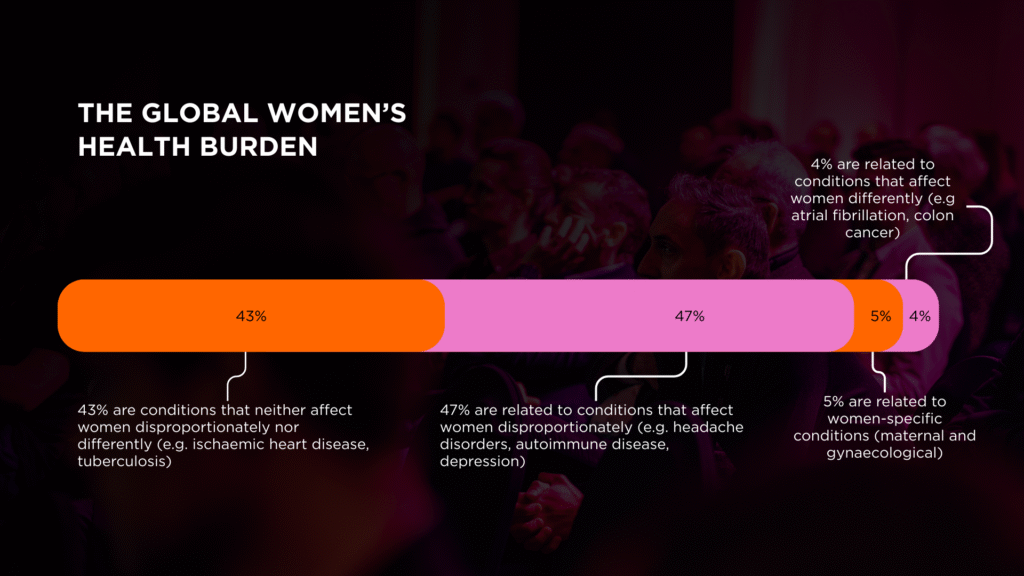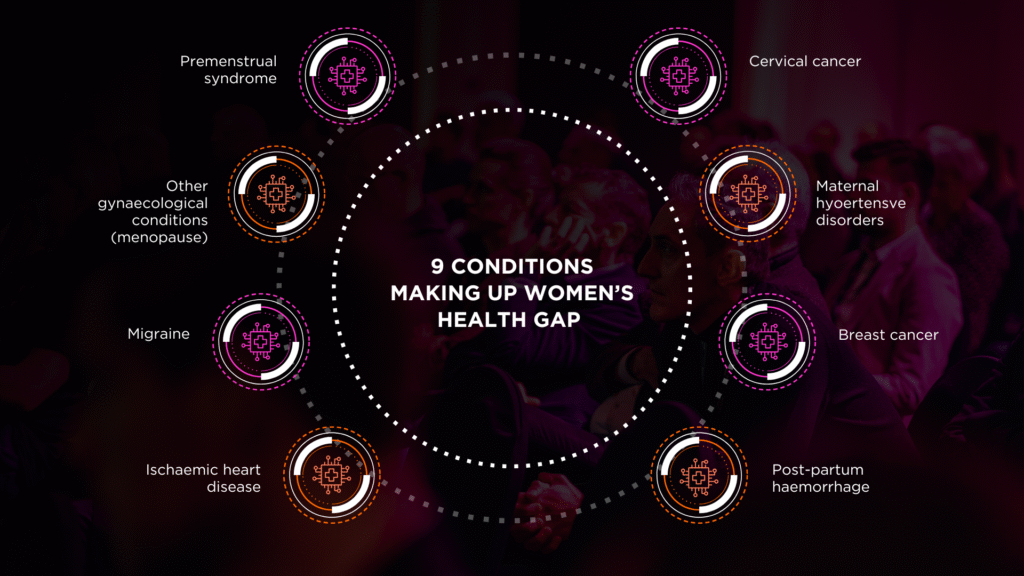Women’s healthcare has been underfunded, under-researched, and too often overlooked. But the impact extends beyond women – it undermines healthcare systems for everyone.
This article explores the myths around women’s diseases, the research gaps, and the urgent need for inclusive innovation in women’s health.
Why “Women’s Diseases” Aren’t Just Women’s Issues
Many health conditions associated with women don’t exclusively affect women. Framing them narrowly as women’s diseases ignores the broader health implications for men, transgender, and intersex people.
– Breast cancer: While most people associate breast cancer with women, the American Cancer Society estimates that 2,800 U.S. men will be diagnosed with invasive breast cancer in 2025
– Transgender men without mastectomies remain at risk, yet face barriers like misgendering and lack of screening guidance.
– Intersex individuals also fall through the cracks in binary-focused healthcare systems, leading to delayed or missed diagnoses.
Improving women’s healthcare research benefits all genders.

The Gender Bias in Medical Research
Medical research has long used men as the default, sidelining women’s unique needs. The result is a lopsided knowledge base with serious health consequences. For example:
– In cardiovascular research, only one-third of participants are women
– Just 4% of coronary artery disease research funding is dedicated to women-specific studies.

Menstrual Pain: Misunderstood and Misdiagnosed
Mild period pain is common. But severe or chronic menstrual pain may indicate conditions such as endometriosis or fibroids – both under-researched and underdiagnosed.
Social stigma keeps many women silent, while others are dismissed by doctors who minimize symptoms as “just part of being a woman.”
Menstrual pain is not a weakness – it’s a critical women’s healthcare issue requiring proper diagnosis and treatment.
Why Women’s Pain Is Often Ignored
Bias in healthcare extends into everyday experiences of pain. Studies reveal striking inequalities in how women are assessed and treated:
– A 2024 study found that women are 10% less likely than men to have their pain level assessed upon arriving at the hospital
– They wait an average of 30 minutes longer to see a doctor.
– Women are less likely to receive pain relief for the same symptoms.
This shows the persistent gender bias in healthcare that continues to put women at risk.
The Risks of Ignoring Women’s Healthcare
The consequences of under-researching and underfunding women’s health are severe. Without inclusive research and testing, drugs and treatments can be unsafe or ineffective for women:
– Women report 52% more side effects from approved medications than men
– A landmark 21-year study in Denmark showed women were diagnosed later than men in over 700 diseases – including delays of 2.5 years for cancer and 4.5 years for diabetes.
In fact, the World Economic Forum and McKinsey Health Institute estimate that just nine conditions drive more than a third of the women’s health gap, spanning both lifespan and day-to-day health.

According to Eurostat, women in the EU live an average of 84 years, compared to 78.7 years for men. Yet when it comes to healthy life years, the difference nearly disappears: women average 63.3 years versus 62.8 years for men.
In other words, women are living longer, but spending more of those years in poor health – a gap that better research and investment could help close.
Progress and Opportunities in Women’s Healthcare
Despite these challenges, there are promising signs of change. Governments, markets, and innovators are finally putting women’s health higher on the agenda:
– Governments are funding women’s health equity (UK: £25 million for Women’s Health Hubs).
– The global menopause market is expected to grow from $18.56 billion in 2025 to $27.63 billion by 2033.
– Investors are showing growing interest in women’s health startups and femtech solutions.
What was once considered “niche” is now becoming mainstream. But progress requires sustained focus on closing the gender health gap.
Startups are a driving force in this shift. At Health Tech Challengers, emerging companies are pitching breakthrough solutions – from femtech platforms to AI-powered diagnostics – that could transform the way we approach women’s healthcare.
Be Part of the Change at Health Tech Forward 2025
At Health Tech Forward 2025, women’s healthcare takes center stage:
– Expert panels on closing the research gap.
– The Women’s Health track at Health Tech Challengers, spotlighting startups. 👉 Register here
Closing the gender health gap takes all of us. If you’re ready to drive change – whether through research, innovation, or partnerships – connect with the Health Tech Forward team and let’s make it happen.
FAQs About Women’s Healthcare
Historically, male bodies were the research default, leaving women’s diseases overlooked in trials and budgets.
Endometriosis, fibroids, menopause, and autoimmune conditions disproportionately affecting women.
It leads to delayed diagnoses, dangerous side effects, and treatment plans that don’t fit women’s biology.
Support femtech startups, invest in inclusive clinical trials, and fund women’s health research.
At Health Tech Forward 2025, women’s healthcare is a priority theme, with dedicated tracks, pitch competitions, and global partnerships.



